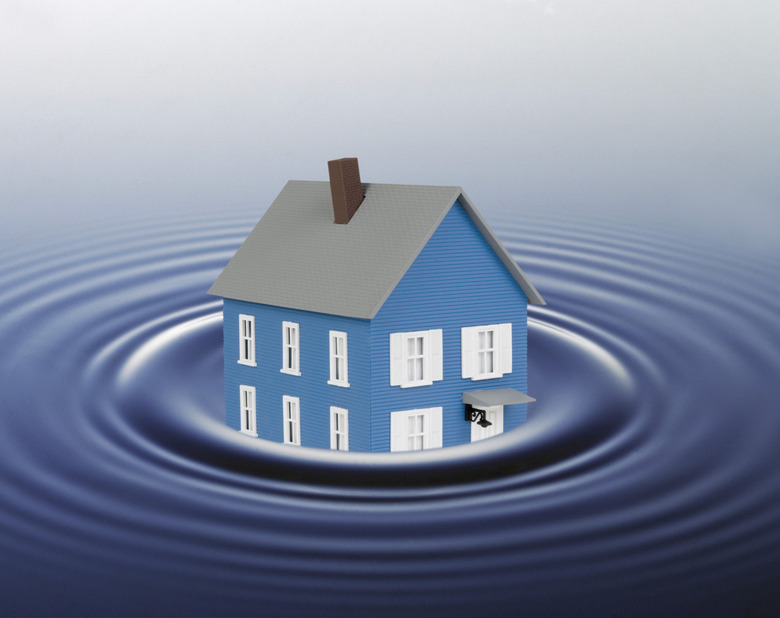A Flood Experiment To Do For Children
The Free Dictionary defines a flood as "an overflowing of water onto land that is normally dry." Too much rain causes rivers to overflow and dams to break, sending water gushing across lawns, fields and roads. Floods sweep away anything in their path. Flood experiments test how different soils absorb water, how water flows and the force of water.
Soils
Soils
Floods happen when the soil can no longer absorb the water falling directly onto the ground or overflowing from a river, pond or dam. Instead of soaking into the soil, the water runs off. Too much runoff and you have a flood. Set up several water-resistant trays of metal or plastic. Fill each with a different soil such as potting or garden soil, gravel, sand, clay and chalk. Using a watering can held over one end, begin to pour water into each tray. Pour steadily, like a gentle rain. Pour the same way for each tray. Take pictures as the water flows. Have children document which soil best absorbs the water and the order in which the water goes from "rain" to flooding the trays.
Terraces
Terraces
Discover whether landscaping changes how the ground absorbs water and which provides the best answer for preserving ground from flooding. Use potting soil. In two different trays 12 to 15 inches long with 6-inch-high sides, create two different scenes. In one tray, angle the soil high to low in a long slope. In the second tray, slope the soil from one end to the other, but every 2 inches, horizontally across the slope, create a mound or terrace of soil. Pour water steadily on the upper side of each tray. Note the direction and speed of the water flow of each. Document whether including barriers on the slope helps protect against flooding. Do this experiment with loose soil and after packing down the soil, then document differences to the water flow and flooding.
Dams
Dams
In three different trays filled with soil, use tubing, plastic bags or foil to create rivers that meander through the soil from one side to the other. Add small houses, people, vehicles and animals to the scenes. In each tray create dams. Build one dam of rocks and gravel, one of sticks and twigs and, for the third, wrap sand tightly in a paper towel. Place dams in the same location in each tray. Pour water onto one end of the river in each tray. Continue pouring. Document what happens to each dam. Which dam breaks first? Which dam works best and holds up the longest? Document what happens to people, buildings, animals and vehicles when the trays flood.
Rain Fall
Rain Fall
Make a plot of ground outside at least a foot square. Let children mark plots with garden stakes marked with their names. Some plots should be on flat ground, others on sloping ground. During or after a rain storm, check the plots. Document changes. Document how the ground absorbs and changes after each rain during the school year. If some plots flood, discover why they flood by looking at the surrounding area. If water puddles in some plots, document why. Summarize findings as to what factors in the surrounding environment are likely to foster flood conditions.
Cite This Article
MLA
Scheidies, Carolyn. "A Flood Experiment To Do For Children" sciencing.com, https://www.sciencing.com/flood-experiment-children-10025793/. 24 April 2017.
APA
Scheidies, Carolyn. (2017, April 24). A Flood Experiment To Do For Children. sciencing.com. Retrieved from https://www.sciencing.com/flood-experiment-children-10025793/
Chicago
Scheidies, Carolyn. A Flood Experiment To Do For Children last modified March 24, 2022. https://www.sciencing.com/flood-experiment-children-10025793/
